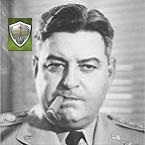ColinWright
Posts: 2604
Joined: 10/13/2005
Status: offline

|
An issue I've mentioned in the past is the inaccuracy of armor and artillery still being able to fight at some portion of their original effectiveness even after they've gone to red-light supply.
Infantry is okay. After all, as long as you can get a few tons of ammo up to the rifle regiment, it'll still be able to function with a significant portion of its original effectiveness. A man with only twenty rounds in his clips becomes quite chary with his bullets -- and if you can just get him another handful of bullets when he uses those he has, he'll keep posing quite a threat to the enemy.
Not so with artillery and armor. Cannon without shells remain visually interesting, but cannot do anything to disturb people ten kilometers away. Tanks, similarly, simply cannot move without fuel. Infantry can still march if they're hungry -- they'll start spending an awful lot of time foraging, but they will move. Not tanks. No fuel, no go. No shells, no shoot.
And both tanks and artillery go through materiel very fast. If they're not getting a nice steady stream, their effectiveness plummets to nil in very short order. Like maybe a day of intense battle.
As I said, this has been observed before. Trick is how to simulate it -- and I think I thought of a fairly doable way.
There's a mechanism for checking after each battle for whether a unit goes into reorganization, and at the beginning of each turn to see if it comes out of it. So add a (preferably designer controlled) parameter to send armor- and artillery-iconed units into re-org if their supply has fallen below x percent and keep them their until their supply rises above x percent. If 'x' is designer controlled, it can have a default value of zero, older scenarios won't be affected, and designers that don't like it can leave it at zero. The rest of us can pick whatever value serves our purposes.
This opens a lot of interesting possibilities. For one thing, one can manipulate which units are subject to the effect by choosing one's icon accordingly. Want some infantry to stop if they don't have supplies? Make them armored infantry. Want some artillery to keep being able to fire but not others? Put the artillery you want to keep getting shells in HQ's.
Another aspect of such a change is that one would have an incentive to really rest artillery -- that is to say, build up for the 'big push.' Right now of course, start right away. The defender will be resting too. But if the parameter is set at 40% supply --well. If you go as soon as your artillery comes out of re-org, it'll all go back into re-org after one round. If you want that big breakthrough, you'd best wait until all the artillery is at 100%.
This change would also make it possible for an offensive to 'run out of steam.' As matters stand, by the time an attacking force has gone to red-light, like as not so has the defender, so one might as well plunge on. Absent the defender actually getting new units, the balance hasn't changed. If artillery and tanks started coming to a halt -- vide innumerable Red Army offensives -- that would change. Model could indeed patch up the Eastern Front even without an end to the shock effect. Not much chance of counter-attacking, but those scattered tank units still moving and those unsupported hordes of infantry can be held at bay.
About the only real complexity I see is that artillery firing in support of attacks would also needed to be included in the reorg check -- which I don't believe it is now. Other than that, it seems to me that this would be a matter of plugging additional routines into existing programming.
_____________________________
I am not Charlie Hebdo
|
 Printable Version
Printable Version












 New Messages
New Messages No New Messages
No New Messages Hot Topic w/ New Messages
Hot Topic w/ New Messages Hot Topic w/o New Messages
Hot Topic w/o New Messages Locked w/ New Messages
Locked w/ New Messages Locked w/o New Messages
Locked w/o New Messages Post New Thread
Post New Thread